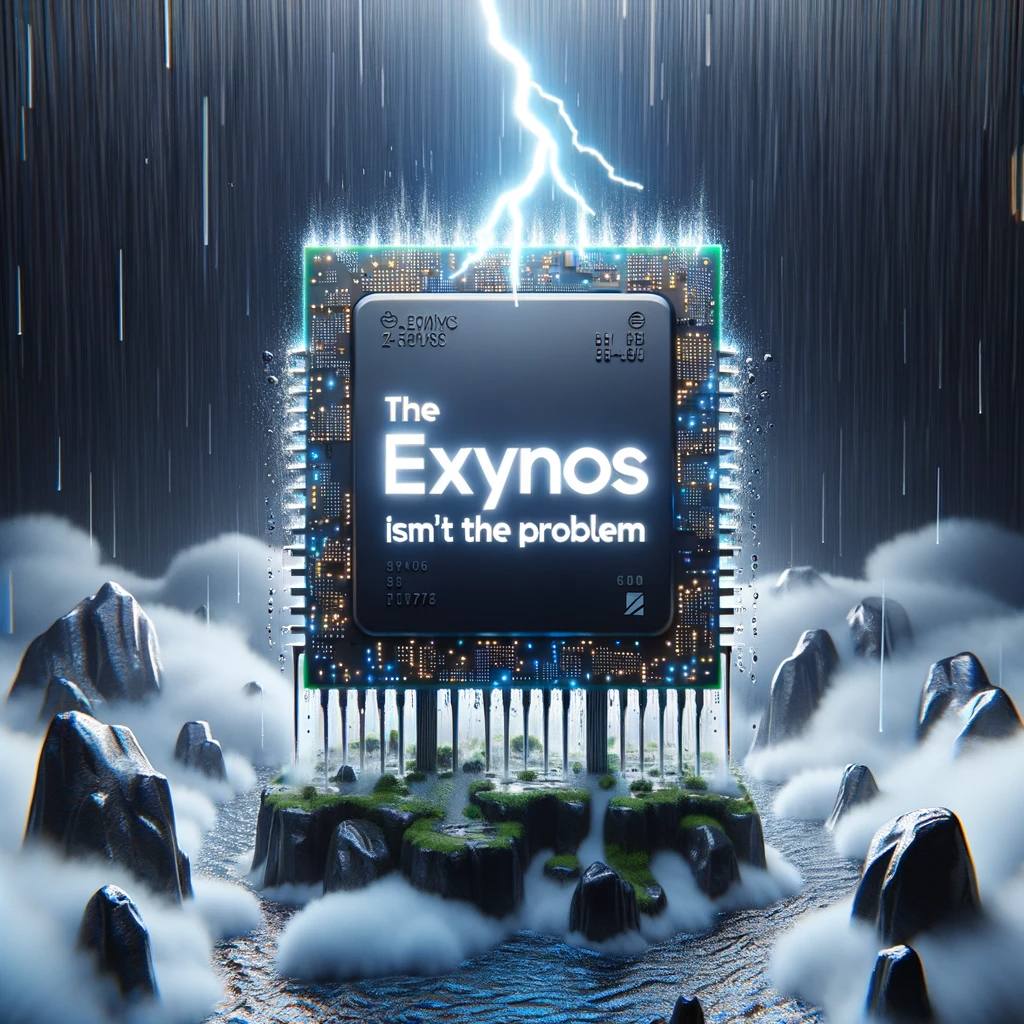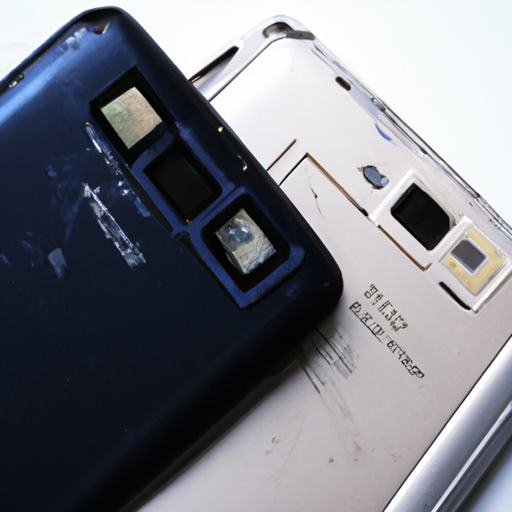In the world of Samsung’s Galaxy phones, there is a contentious issue that many users have been facing – the difference in performance between the Qualcomm Snapdragon chip and the Exynos chip, depending on the country. It’s no secret that this difference has caused frustration among users, with some even petitioning for Samsung to stop using external chips altogether. The article explores the reasons behind Samsung’s use of both chipsets, including cost considerations and leveraging their own chip for better deals with Qualcomm. While the use of two chipsets may have its downsides, it may also benefit Samsung’s overall business and product development.
However, using two different chipsets prevents Samsung from fully optimizing their devices, and there may be hidden costs associated with it. This leads to disparities in performance and can even hold back new features for Galaxy phones. The article also reveals potential reasons behind Samsung’s choice to use both chips, such as cost savings and leveraging their own chip for better negotiations with Qualcomm. Despite the frustrations expressed by users, it is likely that this issue of using two chipsets will continue in the future.
Understanding the Two Chipsets
Samsung’s Galaxy phones are equipped with either a Qualcomm Snapdragon or an Exynos chip, depending on the country. This geographical discrepancy has led to differences in performance and has even hindered the implementation of new features across all Galaxy phones. While some users have expressed frustration with these disparities, it’s important to note that the issue lies not with the Exynos chip itself, but with the fact that Samsung uses both chipsets. This dual chipset approach prevents Samsung from fully optimizing their devices and may have hidden costs associated with it.
The Qualcomm Snapdragon explained
The Qualcomm Snapdragon is a widely recognized and popular chipset used in smartphones. It is known for its powerful graphics and processing capabilities, which result in smooth and fast performance. With excellent benchmark scores and superior user experiences, the Snapdragon chipset has garnered a strong reputation in the market. However, its availability is limited to certain regions, such as the US and Canada.
The Exynos chip explained
On the other hand, the Exynos chip is Samsung’s in-house chipset that is used in Galaxy phones sold in other countries, including the UK. While it may not enjoy the same level of recognition and prestige as the Snapdragon, it still delivers impressive performance. In the past, the Exynos chip has outperformed its Snapdragon counterpart, leading to frustration among users who do not have access to the superior version. However, it is worth noting that the performance differences between the two chipsets have become less pronounced in recent years.
Regional reliance on specific chipsets
Due to various agreements and partnerships, Samsung relies on Qualcomm for the supply of Snapdragon chips to be used in their Galaxy phones sold in certain regions. This regional reliance on specific chipsets results in different performance capabilities across different markets. While this may be a strategic business move on Samsung’s part, it has led to disparities in user experiences and features available on Galaxy phones.
Performance Differences Between Snapdragon and Exynos
The performance differences between Snapdragon and Exynos chipsets are often a subject of debate among tech enthusiasts. Comparisons between the two chipsets have shown variations in graphics capabilities and speed. Benchmark tests have revealed that one chipset may outperform the other in certain aspects, leading to varying user experiences.
Comparing graphics and speed differences
The graphics capabilities of the Snapdragon chipset have generally been regarded as superior, providing smoother visuals and more detailed gaming experiences. Similarly, the speed of the Snapdragon chipset often surpasses that of the Exynos chipset, resulting in faster app loading times and overall device responsiveness.
How benchmarks have shown a variation
Benchmark tests have further highlighted the performance differences between Snapdragon and Exynos chipsets. These tests measure various aspects, such as processing speed, graphical rendering, and multitasking capabilities, to provide objective performance comparisons. While results vary depending on the specific model and chipset version, they often indicate minor performance disparities between the two chipsets.
User experience disparities
User experiences with Snapdragon and Exynos chipsets can differ due to the varying performance capabilities of each. Users may notice faster app launches, smoother multitasking, and better gaming performance on Snapdragon-powered devices. Conversely, those using Exynos-powered devices may experience slightly slower performance in these areas. However, it is essential to note that these differences have become less pronounced in recent years as Samsung has made efforts to improve optimization and close the gap between the two chipsets.
Unveiling New Features: The Chipset Dilemma
The use of dual chipsets presents a unique challenge when it comes to implementing new features on Samsung Galaxy phones. This dilemma arises as certain features may be limited or only supported by one chipset, leaving users of the other chipset without access to these features.
Defining the problem with a dual chipset choice and new features
The problem lies in the fact that Samsung must develop and optimize new features for two different chipsets simultaneously. This can lead to limitations in the availability of certain features on one chipset or the other, as the hardware capabilities may differ between the two. For example, if a new feature requires specific hardware support that is present in the Exynos chipset but absent in the Snapdragon chipset, Samsung cannot selectively enable the feature on the Exynos version without disappointing Snapdragon users.
Examples of new feature limitations tied to Exynos or Snapdragon
One example of such a limitation is 4K video recording at 120 frames per second. If the Exynos chipset supports this feature, but the Snapdragon chipset does not, Samsung faces a difficult decision. Enabling the feature exclusively on the Exynos version may be seen as unfair to Snapdragon users but failing to support the feature on any device is also a source of dissatisfaction among Exynos users. These limitations can result in frustration and disappointment among users who feel that their devices are not offering the same feature set as others.
How future features might be impacted
As technology continues to evolve, the implementation of new features becomes increasingly complex. Samsung’s dual chipset approach may present challenges in delivering certain features uniformly across all Galaxy phones. The need to optimize features for both chipsets can slow down the development process and introduce additional complexities. Samsung will have to carefully navigate these challenges to ensure that future features can be fully utilized by all users, regardless of their chipset.
Inherent Difficulties with Optimization
The complexity of optimizing for two different chipsets presents inherent challenges for Samsung. While the company strives to provide a consistent user experience across all devices, disparities in hardware capabilities can pose obstacles to achieving this goal.
The complexity of optimizing for two chipsets
Optimizing software and firmware to function seamlessly with two different chipsets requires extensive resources and expertise. Each chipset has unique specifications and capabilities, meaning that Samsung must fine-tune its software to perform optimally on both. This complexity can lead to delays in software updates and potentially compromise the overall performance of Galaxy phones.
Potential negative impact on device performance
Having to optimize for two different chipsets simultaneously may limit Samsung’s ability to fully leverage the capabilities of each chipset. This could result in suboptimal performance on certain devices, as the software may not be fully optimized for the specific hardware configuration.
Hidden costs tied to optimization efforts
Optimizing software for two chipsets can be resource-intensive and time-consuming. This allocation of resources may divert Samsung’s attention from other areas, such as software updates or new feature development. The hidden costs of maintaining this dual chipset strategy could potentially hinder Samsung’s product development and slow down the introduction of new innovations.
Why Samsung Uses Both the Snapdragon and Exynos Chipset
Understanding the reasons behind Samsung’s use of both the Snapdragon and Exynos chipsets can shed light on the company’s overall strategy and business considerations.
Understanding business and cost considerations
One possible reason for Samsung’s use of both chipsets is cost considerations. Qualcomm’s Snapdragon chips come with integrated modems that are essential for CDMA and 4G technologies. By using Snapdragon chips in regions where CDMA and 4G are prevalent, Samsung can avoid additional costs associated with incorporating separate modems into their devices.
The leveraging of Exynos for better Qualcomm deals
Samsung’s position as a major player in the foundry business gives them an advantage when negotiating deals with Qualcomm. By manufacturing a significant percentage of Qualcomm’s chips, including those used in Snapdragon chipsets, Samsung can leverage their position to secure better deals for themselves. This arrangement benefits both companies and could be one of the motivations behind Samsung’s use of their own Exynos chip in addition to Qualcomm’s Snapdragon.
Examining Samsung’s overall strategy
Samsung’s decision to use both the Snapdragon and Exynos chipsets is likely part of a larger strategy. As a hardware-centric company, Samsung aims to bolster its dominance in the smartphone market by developing in-house chipsets. The utilization of their own Exynos chip not only allows Samsung to have more control over the hardware of their devices but also positions them favorably in negotiations with Qualcomm. By diversifying their chipset offerings, Samsung can cater to different market needs and potentially gain a competitive edge.
Potential Advantages to Samsung’s Dual Chipset Strategy
While the dual chipset strategy may present challenges, there are potential advantages that Samsung can reap from this approach.
How a dual chipset strategy helps Samsung diversify
By utilizing both the Snapdragon and Exynos chipsets, Samsung can diversify its product offerings and cater to different markets. This flexibility allows Samsung to customize their devices based on regional demands and consumer preferences. By providing different options, Samsung can capture a wider customer base and maximize sales potential.
The flexibility gained from producing in-house chipsets
Samsung’s in-house Exynos chip provides the company with greater control over the hardware of their devices. This flexibility allows Samsung to optimize their devices to a high degree and potentially offer unique features or functionalities that set them apart from competitors. By having their own chipset solution, Samsung can further differentiate themselves in the crowded smartphone market.
Possible financial benefits for Samsung
While the dual chipset strategy may have hidden costs tied to optimization efforts, it can also offer financial benefits. By manufacturing their own chipsets, Samsung can reduce their reliance on external suppliers, potentially lowering production costs in the long run. Additionally, Samsung’s leverage in negotiations with Qualcomm may result in more favorable deals that positively impact their bottom line.
Contextualising Users’ Frustration
The disparities between the Exynos and Snapdragon chipsets have not gone unnoticed by consumers, and frustration has been expressed online through social media and tech forums.
Public perception of the Exynos vs Snapdragon issue
The general public’s perception of the Exynos vs Snapdragon issue varies. Some users are aware of the performance differences between the two chipsets and express frustration at not being able to access the superior version. Others may be unaware of the discrepancy and may not notice any significant differences in their day-to-day device usage. However, it is evident that there is a vocal segment of users who are dissatisfied with the disparities and actively voice their concerns.
The role of social media and online tech forums in the debate
Social media platforms and online tech forums play a significant role in shaping the discourse around the Exynos vs Snapdragon debate. Users often share their experiences, compare benchmark results, and discuss the implications of using either chipset. This online discourse can amplify users’ frustrations and contribute to the overall perception of the issue.
Impact on brand loyalty
The disparities between the Exynos and Snapdragon chipsets have the potential to influence brand loyalty among consumers. Those who experience the inferior version may develop negative sentiments towards Samsung, whereas those who have a positive experience with the superior version may develop stronger brand loyalty. However, it is worth noting that brand loyalty is influenced by various factors, and the chipset issue alone may not be the sole determinant.
Global Implications of the Dual Chipset Approach
The use of both Snapdragon and Exynos chipsets has implications not only for Samsung but also for consumers in different markets, particularly for international travelers.
How different markets react to Snapdragon or Exynos
Different markets have distinct reactions to either Snapdragon or Exynos chipsets based on their availability. In regions where Snapdragon devices are more prevalent, consumers may have higher expectations in terms of performance and features. On the other hand, consumers in regions where Exynos devices dominate may have more positive perceptions of their devices despite potential performance disparities.
Potential problems for international travelers
The dual chipset approach can pose challenges for international travelers who may purchase a Galaxy phone in one country and use it in another. Depending on the chipset version they have, they may experience variations in performance or feature availability when traveling to regions with a different chipset preference. This may lead to confusion and dissatisfaction among consumers who expect a consistent experience regardless of their geographic location.
Considerations for Samsung’s global strategy
Samsung’s global strategy must take into account the geographical preferences and expectations of consumers when it comes to Snapdragon and Exynos chipsets. Balancing these preferences and ensuring a consistent user experience across markets can be a complex task. Samsung must carefully analyze market trends, consumer feedback, and performance expectations to make informed decisions and develop strategies that cater to diverse global markets.
Predicting the Future for Samsung’s Chipsets
Analyzing the future trajectory of Samsung’s chipset strategy involves considering upcoming technologies, competitors’ actions, and the viability of the dual chipset approach.
Analysis of the longevity of the dual chipset strategy
The continued use of the dual chipset strategy by Samsung will likely depend on various factors such as market demand, technological advancements, and the competitive landscape. As technology evolves and performance disparities between the two chipsets diminish, Samsung may choose to prioritize one chipset over the other or develop a unified solution. However, until there is a significant shift in the market or Samsung’s internal strategy, the dual chipset approach is likely to persist.
How upcoming technologies might influence this decision
New technologies can significantly impact Samsung’s chipset decisions. For example, the integration of 5G capabilities may require a shift in chipset preferences, as certain chipsets may offer better compatibility and performance in a 5G-enabled environment. Samsung will need to evaluate how emerging technologies align with their dual chipset strategy and make decisions accordingly to ensure optimal device performance and user experience.
What competitors’ actions can suggest for Samsung’s future
Monitoring the actions of competitors can provide insights into Samsung’s future chipset decisions. If other smartphone manufacturers leverage a single chipset solution effectively, Samsung may consider transitioning to a similar approach. Likewise, if Samsung’s competitors introduce innovations or optimizations that outperform their current offerings, it may prompt Samsung to reconsider their chipset strategy. Keeping a close eye on the market and competitors’ moves will be crucial in shaping Samsung’s future direction.
Conclusion
The Exynos vs Snapdragon scenario poses challenges for Samsung, as it results in performance differences and potential limitations in feature implementation. While the dual chipset strategy may frustrate some users and have hidden costs tied to optimization efforts, there are potential advantages for Samsung’s business and product development. The decision to use both chipsets allows Samsung to cater to diverse markets, leverage their own in-house chipsets for better deals, and provide flexibility in their product offerings. While brand loyalty and consumer perception play a role, the issue itself may not be a significant concern for the majority of consumers. As Samsung continues to navigate the complexities of the dual chipset approach, it is essential to monitor market trends, technological advancements, and consumer expectations to ensure that Galaxy phones meet the demands of a global market.










